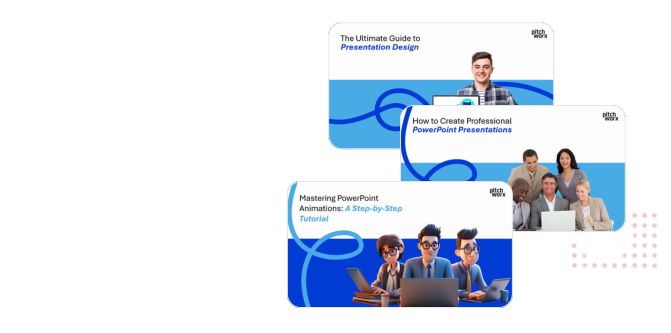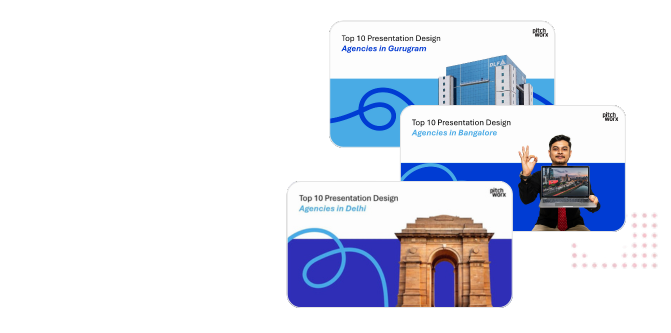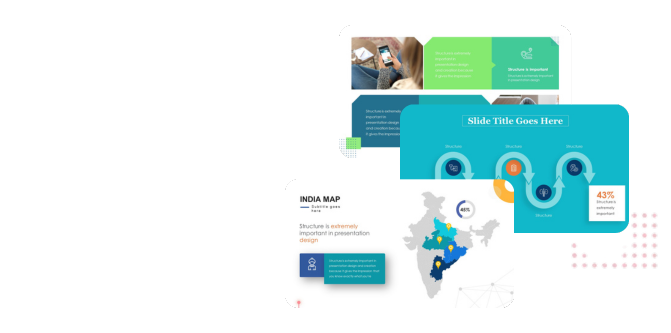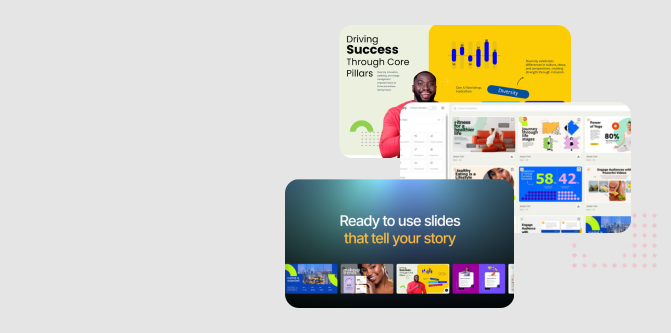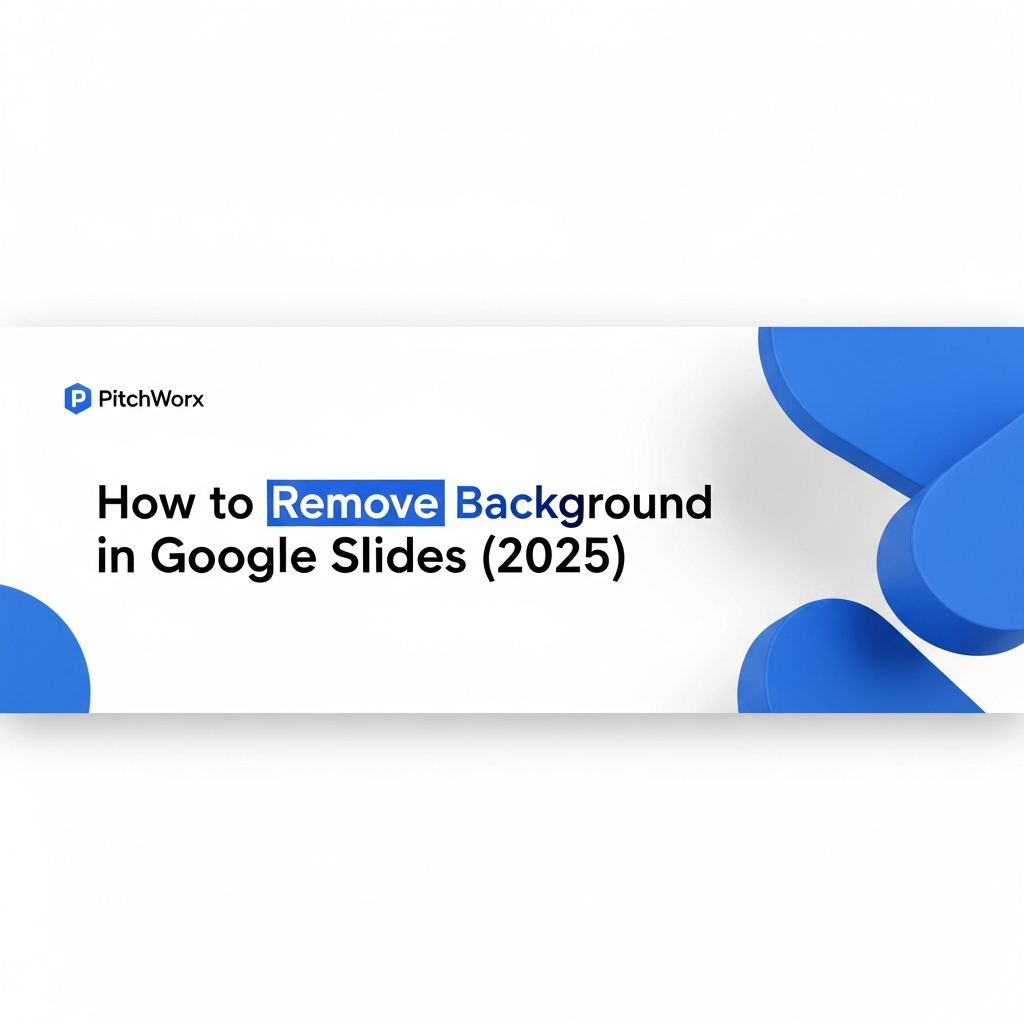Published: July 1, 2025 | Reading Time: 12 minutes | Author: PitchWorx Design Team
Table of Contents
- Introduction
- The High Cost of Getting It Wrong
- Understanding the Brand-Style Connection
- Industry-Specific Style Considerations
- Audience-Driven Design Decisions
- Cultural and Regional Considerations
- The Design Style Selection Process
- Common Style Selection Mistakes
- Building a Sustainable Design System
- Technology and Modern Presentation Trends (2025)
- Measuring Design Style Effectiveness
- Implementation Strategy and Timeline
- ROI and Business Impact
- Future-Proofing Your Design Style for 2025 and Beyond
- Conclusion: Your Design Style as Strategic Asset in 2025
Listen to this Guide
Introduction
Your presentation design style is more than just aesthetics—it’s your brand’s visual voice in the boardroom, on stage, and across every stakeholder interaction. After designing over 150,000 slides for companies ranging from startups to Samsung, we’ve learned that the right presentation style can make the difference between a forgettable meeting and a game-changing moment.
Yet many businesses struggle with this fundamental question: How do you choose a presentation design style that truly represents your brand while achieving your business objectives in 2025’s competitive landscape?
The answer isn’t just about following current design trends or copying what looks good. It’s about creating a strategic alignment between your brand identity, audience expectations, and modern communication requirements.
The High Cost of Getting It Wrong
Before diving into solutions, let’s acknowledge what’s at stake. We’ve seen:
- Startups lose funding opportunities because their pitch decks didn’t match investor expectations
- Corporate teams fail to engage executives with overly complex or off-brand presentations
- International companies struggle in new markets due to culturally inappropriate design choices
- Technical teams lose audience attention with visually overwhelming or unclear presentations
The common thread? A mismatch between presentation style and strategic objectives.
Understanding the Brand-Style Connection
Your Brand Personality Drives Design Decisions
Every brand has a core personality that should guide presentation style choices. Here’s how we analyze this for our clients:
Conservative & Trustworthy Brands (Banking, Legal, Government)
- Design approach: Clean, structured, professional
- Color palette: Blues, grays, whites with minimal accent colors
- Typography: Classic serif or clean sans-serif fonts
- Layout: Grid-based, hierarchical, plenty of white space
- Imagery: Professional photography, minimal illustrations
Innovative & Dynamic Brands (Tech, Startups, Creative Agencies)
- Design approach: Bold, modern, experimental
- Color palette: Vibrant primaries, gradients, high contrast
- Typography: Contemporary sans-serif, custom fonts
- Layout: Asymmetrical, varied, interactive elements
- Imagery: Abstract graphics, modern photography, custom illustrations
Approachable & Human-Centered Brands (Healthcare, Education, Non-profits)
- Design approach: Warm, accessible, story-driven
- Color palette: Warm tones, earth colors, soft contrasts
- Typography: Friendly sans-serif, readable fonts
- Layout: Organic flow, human-scale elements
- Imagery: Real people, authentic moments, inclusive representation
Premium & Sophisticated Brands (Luxury, High-end Services, Consulting)
- Design approach: Minimal, elegant, refined
- Color palette: Monochromatic, metallic accents, sophisticated neutrals
- Typography: Premium fonts, generous spacing
- Layout: Luxurious white space, premium materials
- Imagery: High-quality photography, premium lifestyle elements
Industry-Specific Style Considerations
Financial Services & DIFC Companies
Working extensively with Dubai’s financial sector, we’ve learned that presentation style in finance isn’t just about aesthetics—it’s about compliance and credibility.
Essential Elements:
- Regulatory compliance: Color coding for risk levels, clear data attribution
- International standards: Consistent with global financial presentation norms
- Data visualization: Complex financial data made accessible and accurate
- Cultural sensitivity: Appropriate for diverse stakeholder groups
Style Characteristics:
- Conservative color schemes with strategic accent colors
- High contrast for readability in various lighting conditions
- Professional typography that maintains readability at small sizes
- Clean layouts that prioritize information hierarchy
Oil & Gas and Energy Sector
The energy sector presents unique challenges requiring technical accuracy combined with stakeholder engagement.
Essential Elements:
- Technical precision: Accurate process flows, safety protocols, environmental data
- Safety communication: Color-coded systems, clear warning indicators
- Stakeholder diversity: From technical teams to government officials to community groups
- Environmental responsibility: Sustainable design principles, green messaging integration
Style Characteristics:
- Industrial color palettes with safety-standard color coding
- Robust typography that works in field conditions
- Technical diagram integration with clear information flow
- Modular layouts for complex technical information
Technology and Innovation Companies
Tech companies need presentations that demonstrate innovation while maintaining professional credibility.
Essential Elements:
- Future-forward aesthetics: Modern design trends, cutting-edge visuals
- Technical complexity: Algorithm explanations, system architectures, data flows
- Global audience: International stakeholder communication
- Rapid iteration: Design systems that adapt quickly to product changes
Style Characteristics:
- Bold, contemporary design with interactive elements
- Modern typography with technical diagram integration
- Flexible color systems that adapt to different product lines
- Modular templates for rapid content updates
Audience-Driven Design Decisions
Executive Presentations: Less is More
When presenting to C-suite executives, your design style must respect their time and decision-making process.
Executive Style Principles:
- Immediate clarity: Key insights visible within 3 seconds
- Minimal text: Maximum 6 words per bullet point
- Premium aesthetics: Sophisticated design that matches their expectations
- Action-oriented: Clear next steps and decision points
Design Implementation:
- Large, bold typography for key messages
- High-contrast color schemes for easy scanning
- Premium imagery and minimal decorative elements
- Clean layouts with strategic use of white space
Technical Presentations: Function Over Form
Technical audiences require presentations that prioritize information clarity over visual appeal.
Technical Style Principles:
- Information density: More content per slide, efficiently organized
- Process clarity: Clear step-by-step flows and logical sequences
- Reference capability: Slides that work as standalone reference documents
- Detail accommodation: Ability to include necessary technical specifications
Design Implementation:
- Smaller, more readable fonts for detailed content
- Systematic color coding for different information types
- Grid-based layouts for complex information organization
- Technical diagram integration with clear labeling systems
Sales Presentations: Emotion Meets Logic
Sales presentations must balance emotional engagement with logical proof points.
Sales Style Principles:
- Emotional connection: Visuals that create desire and urgency
- Social proof: Design that highlights testimonials and success stories
- Clear value proposition: Visual hierarchy that emphasizes benefits
- Action orientation: Strong calls-to-action and next steps
Design Implementation:
- Brand-heavy design with consistent color and imagery
- Engaging photography and human-centered visuals
- Strategic use of contrast to highlight key benefits
- Modular layouts for easy customization across prospects
Cultural and Regional Considerations
Middle East and MEASA Region
Our experience in Dubai and across the MEASA region has taught us that cultural sensitivity in presentation design isn’t optional—it’s essential.
Cultural Design Principles:
- Color significance: Understanding cultural meanings of different colors
- Religious sensitivity: Appropriate imagery and messaging choices
- Language considerations: Arabic text integration and right-to-left reading patterns
- Business formality: Regional preferences for conservative vs. modern approaches
Regional Implementation:
- Bilingual design systems supporting Arabic and English
- Cultural color palettes appropriate for diverse audiences
- Imagery that reflects regional diversity respectfully
- Layout flexibility for different text direction requirements
Global Corporate Standards
International companies need presentation styles that work across cultures while maintaining brand consistency.
Global Style Principles:
- Universal symbols: Icons and visuals that translate across cultures
- Neutral aesthetics: Color and imagery choices that don’t inadvertently offend
- Flexible systems: Templates that adapt to different regional requirements
- Consistent quality: Uniform professional standards regardless of location
The Design Style Selection Process
Step 1: Brand Audit and Analysis
Before choosing a presentation style, conduct a thorough analysis of your existing brand materials.
Brand Consistency Assessment:
- Collect all existing marketing materials, websites, and brand guidelines
- Identify consistent visual elements: colors, fonts, imagery styles
- Note successful design elements that resonate with your audience
- Identify gaps between current materials and desired brand perception
Competitive Analysis:
- Review presentation styles used by direct competitors
- Identify industry standard design conventions
- Note opportunities to differentiate through design choices
- Understand audience expectations within your market segment
Step 2: Audience and Context Mapping
Different presentation contexts require different design approaches, even within the same brand.
Context Categories:
- Internal communications: Team meetings, training, updates
- External stakeholder presentations: Clients, partners, investors
- Public presentations: Conferences, webinars, public speaking
- Sales presentations: Prospect meetings, proposal presentations
Audience Analysis:
- Decision-making authority: How much influence does this audience have?
- Technical expertise: How complex can your content be?
- Cultural background: What design conventions do they expect?
- Time constraints: How much attention can you realistically capture?
Step 3: Design System Development
Create a comprehensive design system that ensures consistency across all presentation contexts.
Core Design Elements:
- Color palette: Primary, secondary, and accent colors with usage guidelines
- Typography system: Font choices for different hierarchy levels
- Image style: Photography, illustration, and icon guidelines
- Layout principles: Grid systems, spacing, and alignment rules
Template Hierarchy:
- Master templates: Core designs for primary presentation types
- Specialized templates: Industry-specific or audience-specific variations
- Modular components: Reusable slide types for common content
Step 4: Testing and Refinement
Before full implementation, test your design style with real audiences and contexts.
Testing Methods:
- Internal stakeholder feedback: Get input from colleagues and leadership
- Pilot presentations: Use new styles in low-stakes presentation contexts
- A/B testing: Compare different style approaches with similar audiences
- Technical testing: Ensure designs work across different devices and platforms
Refinement Criteria:
- Audience engagement: Are people paying attention and retaining information?
- Brand alignment: Does the style feel authentic to your brand?
- Practical usability: Can your team easily create and update presentations?
- Technical performance: Do presentations work reliably across different systems?
Common Style Selection Mistakes
Mistake 1: Following Trends Over Brand Authenticity
The Problem: Choosing design styles based on current trends rather than brand appropriateness.
The Solution: Use trends as inspiration, but filter them through your brand personality and audience needs.
Example: A traditional law firm adopting minimalist startup aesthetics might lose credibility with conservative clients.
Mistake 2: One-Size-Fits-All Approach
The Problem: Using the same presentation style for all audiences and contexts.
The Solution: Develop a flexible design system with variations for different presentation contexts.
Example: Your investor pitch style should be more sophisticated than your internal team update style.
Mistake 3: Ignoring Technical Constraints
The Problem: Choosing design styles that don’t work reliably across different presentation contexts.
The Solution: Consider technical limitations and presentation environments during style selection.
Example: Complex animations might look great on your laptop but fail in a client’s conference room.
Mistake 4: Overcomplicating the Design
The Problem: Adding too many design elements in an attempt to look more creative or professional.
The Solution: Remember that clarity and communication effectiveness should always trump visual complexity.
Example: Using multiple fonts, colors, and design elements can distract from your core message.
Mistake 5: Neglecting Accessibility
The Problem: Choosing color combinations or typography that aren’t accessible to all audience members.
The Solution: Follow accessibility guidelines and test designs with diverse user groups.
Example: Low contrast color combinations might be unreadable for audience members with visual impairments.
Building a Sustainable Design System
Creating Scalable Templates
Your presentation design style needs to work not just for today’s presentations, but for your organization’s long-term communication needs.
Scalability Principles:
- Modular design: Create reusable slide types that can be combined flexibly
- Clear guidelines: Document design rules so team members can create consistent presentations
- Version control: Establish processes for updating and maintaining design consistency
- Training resources: Provide guidance for team members using the design system
Template Categories:
- Title slides: Multiple options for different presentation types
- Content slides: Various layouts for different information types
- Data slides: Chart and graph templates with consistent styling
- Closing slides: Thank you, contact, and next steps variations
Maintaining Consistency Across Teams
Large organizations need systems that ensure design consistency even when multiple people create presentations.
Consistency Strategies:
- Centralized templates: Shared template libraries accessible to all team members
- Brand guidelines: Clear documentation of design rules and usage guidelines
- Review processes: Quality control systems for important presentations
- Training programs: Regular education on design standards and best practices
Evolution and Updates
Your presentation design style should evolve with your brand and market changes while maintaining core consistency.
Evolution Planning:
- Regular reviews: Annual assessment of design effectiveness and relevance
- Incremental updates: Small improvements rather than complete overhauls
- Feedback integration: Incorporating learnings from presentation performance
- Market adaptation: Adjusting styles based on industry and audience evolution
Technology and Modern Presentation Trends (2025)
AI-Enhanced Design Integration
As we move through 2025, artificial intelligence is revolutionizing how presentations are created and optimized.
Current AI Applications:
- Automated design suggestions: AI tools that recommend layouts based on content type
- Real-time optimization: Systems that adjust designs for different screen sizes and contexts
- Content analysis: AI that identifies key messages and suggests visual emphasis
- Brand consistency checking: Automated systems that ensure design compliance
Implementation Considerations:
- Balance AI efficiency with brand authenticity
- Maintain human oversight for strategic design decisions
- Use AI as a tool to enhance, not replace, creative thinking
- Ensure AI suggestions align with your established brand guidelines
Interactive and Immersive Presentations
2025 has seen a significant shift toward interactive presentation formats that engage audiences more effectively.
Emerging Formats:
- Touch-screen optimized presentations: Designs that work seamlessly on interactive displays
- Virtual reality integration: Immersive presentation experiences for product demonstrations
- Real-time polling and feedback: Interactive elements that engage audience participation
- Augmented reality overlays: Enhanced presentations that blend digital and physical elements
Design Implications:
- Create modular designs that work across different interaction modes
- Plan for both passive viewing and active engagement scenarios
- Consider accessibility across different technological capabilities
- Maintain effectiveness even when interactive elements aren’t available
Platform Compatibility in 2025
Your chosen presentation style must work effectively across the evolving landscape of presentation platforms and contexts.
Current Platform Requirements:
- Hybrid meeting optimization: Designs that work for both in-person and virtual attendees
- Multi-device compatibility: Presentations that display effectively on everything from smartphones to large conference screens
- Cloud-based collaboration: Styles that maintain consistency across Google Workspace, Microsoft 365, and other cloud platforms
- Social media adaptation: Presentation content that can be easily repurposed for LinkedIn, Twitter, and other social platforms
2025 Technical Best Practices:
- Use responsive design principles that adapt to different screen sizes
- Optimize for both high-resolution 4K displays and lower-resolution projectors
- Ensure fast loading times for bandwidth-variable environments
- Create accessible designs that work with screen readers and assistive technologies
Design Software Integration:
Consider how your design style will be created and maintained using available design tools.
Tool Considerations:
- PowerPoint native capabilities: Maximize use of built-in features for easier editing
- Adobe Creative Suite integration: Balancing design sophistication with practical usability
- Template management systems: Platforms for distributing and updating design templates
- Collaboration tools: Systems that allow multiple team members to work with design standards
Measuring Design Style Effectiveness
Key Performance Indicators
Track specific metrics to understand how well your presentation design style supports business objectives.
Presentation Performance Metrics:
Audience Engagement:
- Attention levels, question quality, follow-up requests
Business Outcomes:
- Meeting objectives achieved, deals closed, funding secured
Brand Perception:
- Feedback on professionalism, credibility, and brand alignment
Team Efficiency:
- Time required to create presentations, ease of template use
Measurement Methods:
- Audience surveys: Direct feedback on presentation effectiveness and design appeal
- Performance tracking: Correlation between presentation design updates and business outcomes
- Team feedback: Input from colleagues on design system usability and effectiveness
- Competitive analysis: Regular comparison with industry standard design approaches
Continuous Improvement Process
Use performance data to refine and improve your presentation design style over time.
Improvement Strategies:
- Regular design audits: Quarterly review of design effectiveness and consistency
- Best practice documentation: Capturing what works well for future reference
- Experimentation programs: Testing new design approaches in low-risk contexts
- Training updates: Evolving education programs based on common design issues
Implementation Strategy and Timeline
Phase 1: Foundation (Weeks 1-4)
Week 1-2: Research and Analysis
- Complete brand audit and competitive analysis
- Conduct audience research and context mapping
- Define design objectives and success criteria
Week 3-4: Style Development
- Create initial design concepts and style guidelines
- Develop core template prototypes
- Conduct initial stakeholder review and feedback
Phase 2: Testing and Refinement (Weeks 5-8)
Week 5-6: Pilot Testing
- Test design styles in real presentation contexts
- Gather feedback from presenters and audiences
- Identify technical issues and usability challenges
Week 7-8: Refinement and Finalization
- Refine design based on testing feedback
- Finalize template library and style guidelines
- Prepare training materials and documentation
Phase 3: Implementation (Weeks 9-12)
Week 9-10: Team Training
- Conduct training sessions on new design standards
- Distribute templates and guidelines to all team members
- Establish support systems for design questions
Week 11-12: Full Implementation
- Transition all presentations to new design style
- Monitor usage and address implementation challenges
- Begin collecting performance feedback for future improvements
ROI and Business Impact
Quantifying Design Investment
Understanding the business value of improved presentation design helps justify investment and guide decision-making.
Direct Business Impact:
- Sales effectiveness: Improved conversion rates from sales presentations
- Investor confidence: Better funding outcomes from polished pitch decks
- Team productivity: Reduced time spent on presentation creation and revision
- Brand consistency: Stronger brand recognition and professional credibility
Indirect Benefits:
- Employee confidence: Team members feel more confident presenting with professional materials
- Stakeholder perception: Enhanced reputation for attention to detail and professionalism
- Competitive advantage: Differentiation through superior presentation quality
- Scalability: Faster onboarding and training with consistent presentation standards
Cost-Benefit Analysis
Investment Requirements:
- Design development: Initial style creation and template development
- Training costs: Team education and skill development
- Tool licensing: Software and platform subscriptions
- Maintenance: Ongoing updates and support
Expected Returns:
- Time savings: Reduced presentation creation time through better templates
- Improved outcomes: Higher success rates in presentations and meetings
- Brand value: Enhanced professional reputation and market position
- Team efficiency: Reduced revision cycles and approval processes
Future-Proofing Your Design Style for 2025 and Beyond
Emerging Trends and Technologies
Stay ahead of presentation design evolution while maintaining timeless brand consistency in an rapidly changing technological landscape.
2025 Technology Trends:
- AI-powered content optimization: Machine learning systems that suggest improvements based on audience engagement data
- Advanced interactive presentations: Sophisticated touch-screen and gesture-based presentation controls
- Sustainable design practices: Environmentally conscious presentation creation and distribution methods
- Real-time personalization: Presentations that adapt content and style based on audience demographics and preferences
Next-Generation Design Evolution:
- Universal accessibility: Enhanced support for diverse abilities and neurological differences
- Cultural AI: Sophisticated cross-cultural design adaptation using machine learning
- Biometric feedback integration: Presentations that adapt based on real-time audience engagement metrics
- Blockchain verification: Secure, verifiable presentation content for sensitive business communications
Adaptability Planning for 2025-2030
Build flexibility into your design system to accommodate future changes and requirements in an increasingly dynamic business environment.
2025 Flexibility Strategies:
- Modular AI-compatible components: Design elements that work with automated content generation tools
- Scalable sustainability features: Design systems that support carbon-neutral presentation practices
- Cross-platform adaptability: Templates that automatically optimize for different presentation contexts
- Cultural intelligence integration: Design systems that adapt to global audience requirements automatically
Future-Ready Template Categories:
- Hybrid-optimized slides: Templates designed specifically for mixed in-person and virtual audiences
- Interactive content frameworks: Structures that support real-time audience participation
- Data-driven templates: Slides that automatically update with real-time business metrics
- Accessibility-first designs: Templates that prioritize universal design principles from the ground up
Conclusion: Your Design Style as Strategic Asset in 2025
Choosing the right presentation design style isn’t just about making your slides look better—it’s about creating a strategic communication asset that supports your business objectives, strengthens your brand, and enables your team to communicate more effectively in today’s rapidly evolving business landscape.
The most successful organizations in 2025 treat their presentation design style as an extension of their brand strategy, investing in systems that leverage modern technology while maintaining consistency and professional excellence across all stakeholder interactions.
Key Takeaways for 2025:
- Embrace technology thoughtfully: AI and interactive features should enhance, not overshadow, your core message
- Plan for hybrid audiences: Your design must work equally well for in-person and virtual attendees
- Prioritize accessibility: Universal design principles are no longer optional—they’re essential
- Build for adaptability: Create systems that can evolve with rapidly changing technology and business requirements
- Maintain human connection: Despite technological advances, authentic brand personality remains crucial
Remember, your presentation design style will be seen by every stakeholder who matters to your business: customers, investors, partners, employees, and community members. In 2025’s competitive landscape, it must represent the best of what your brand stands for while enabling clear, effective communication that drives measurable results.
The right presentation design style becomes invisible to your audience—they remember your message, not your slides. But achieving that level of clarity and effectiveness requires thoughtful strategy, careful implementation, and ongoing refinement that keeps pace with technological and cultural evolution.
At PitchWorx, we’ve helped hundreds of brands discover their authentic presentation voice through our strategic design process, adapting to the latest trends and technologies while maintaining timeless brand authenticity. If you’re ready to transform your presentation communications into a strategic business asset for 2025 and beyond, we’re here to guide you through every step of the journey.




